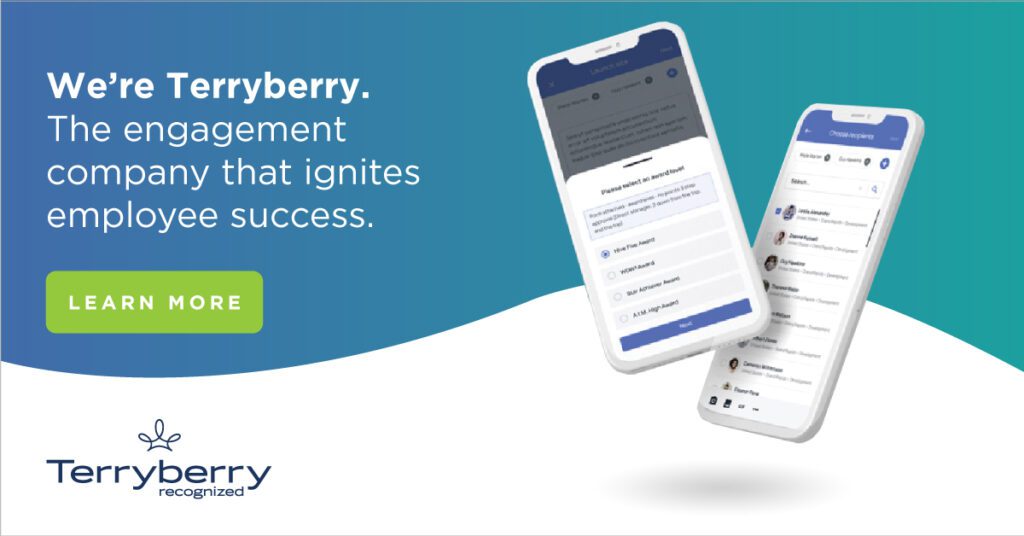January 17, 2023

An organization's success depends on understanding the drivers of employee engagement and retention. Engaged employees are productive, motivated, and committed to their work. In turn, they bring forth innovative ideas to increase revenue.
Here, we'll explore eight key drivers of employee engagement. From recognition and opportunities for growth to a positive work-life balance and effective leadership, these drivers have a direct impact on how involved and motivated employees are in their roles.
Why Is Employee Retention Critical?
Employee retention should be a priority for any organization with growth in mind. It ensures a stable workforce committed to company goals and objectives.
Employee retention elevates businesses in five ways:
1. It's Cost-Effective
Retaining employees reduces the costs associated with hiring and training new ones. Experienced employees are more productive and need less supervision. Keeping top talent saves companies money in the long run.
2. It Improves Morale
When employees feel valued and respected, they're more likely to stay engaged and invested in the company's welfare. This leads to a positive work environment, which can boost productivity and performance.
3. It Increases Loyalty
When your team members feel like they're part of a team and have a stake in the organization's success, they're likely to stay with the company for the long term. This fosters a sense of continuity and stability within the organization.
4. It Leads to Better Customer Service
The longer you keep your employees, the more experienced they will be. They'll continue to develop a deep understanding of your business and its customers, and know how to best serve them.
In contrast, high turnover leads to poor customer care. When employees constantly leave, it's difficult for the remaining staff to keep up with demands. This means longer wait times for customers and a higher chance of mistakes and errors in service. Companies with high turnover lack experienced staff, which further contributes to inconsistent service standards.
5. It Gives a Competitive Advantage
A company that prioritizes employee retention can attract top talent with a competitive advantage in the marketplace. Potential and current employees will receive a clear message that they're valued and encouraged to grow. When workers can envision long-term career opportunities at an organization, they look forward to showing up every day.
Top 5 Reasons Why People Leave Jobs
The younger generation of workers is changing jobs more frequently. In fact, the Bureau of Labor Statistics Employee Tenure Summary reports that the median tenure for workers aged 25-34 is 2.8 years. But don't mistake short tenures as simply a product of flaky youth. The reasons cited for job hopping range from wanting higher pay and better benefits to seeking career advancement opportunities and flexibility.
Even when justified, job hopping can be a dire problem for companies. Employee turnover decreases productivity and increases costs. Understanding why employees leave their roles is essential for preventing turnover and keeping top talent.
Here are the top five reasons why people leave their jobs:
1. Not Enough Advancement Opportunities
Employees need to experience progression in their careers. If they're stagnant in their current positions, they may seek out new opportunities elsewhere. This is particularly true for younger workers too.
In fact, a LinkedIn survey found that 40% of young workers said they were willing to accept a 5% pay cut to work in a position that offered career growth opportunities.
2. Lack of Competent Leaders
The old adage is true - people don't quit jobs, they quit managers. Poor management creates a negative work environment, low morale, and a lack of trust in leadership. This makes employees lose faith in the company. As a result, they'll find employment somewhere else.
3. Low Compensation
A recent Pew Research Center survey found that low pay was the top reason why people quit their jobs. 63% of respondents resigned from their roles in 2021 because their pay was too low. At least one-third said it was a major reason why they left.
It's true — money is a significant motivator for employees. If they're not being fairly compensated for their work, they may start looking for a job that offers better pay.
4. No Work-Life Balance
In today's fast-paced world, a healthy work-life balance is necessary for everyone. If people feel their jobs are consuming too much time and energy, they may reconsider their roles. These days, job seekers strive to fit their personal and work lives fluidly.
5. Unsatisfying Work
Fulfillment is huge in the workplace. If your team members aren't loving their jobs or feel their work has no meaning, they'll start searching for a more invigorating role.
RELATED: Employee Recognition Statistics What HR Professionals Need to Know in 2022
What Is Employee Engagement?
Employee engagement is a measure of how engaged employees are with their work and their employer. It reflects the level of emotional commitment that an employee has to the organization. Engaged employees feel a sense of connection and purpose in their work. In turn, they're invested and go above and beyond to reach business goals.

8 Key Drivers of Employee Engagement
As a leader, your goal is to have everyone on your team engaged and satisfied. When employees are engaged in their work, they feel like they're making an impact and getting rewarded for their efforts. In other words - they're happy!
But it takes more than one person or department within your company to drive employee engagement. For it to be sustainable, it must be a company-wide effort.
Let's examine 8 key drivers of employee engagement:
1. Appreciation and Recognition
According to Gallup's Transforming Workplaces Through Recognition report, more than 70% of workers with excellent recognition at work "rate their lives more positively overall and are more likely to be thriving in their everyday lives compared to those who aren't being fully recognized."
It's no secret that recognition is a powerful motivator. It can take several forms, from a simple "thank you" to an award or even a bonus.
Need more ideas to boost morale, motivation, and engagement? Try these:
- Show appreciation by letting your hardworking employee take a day off.
- Give your employee of the month a special parking spot, gift card, or lunch.
- Celebrate milestones like work anniversaries and meeting sales goals.
- Let top performers attend seminars, workshops, and conferences for free to further their professional development.
- Host recognition events for employees where you recognize them for their achievements and contributions while having fun and bonding.
Tip: Give recognition when an employee deserves it—not as an empty gesture. If you want your employees to feel appreciated, make sure they understand what makes them worthy of praise in the first place.
Recognition should be frequent enough so people don't forget your appreciation and how much their contributions mean to the company. A good rule of thumb is to recognize staff members at least once every two weeks. Employees shouldn't have to wait for an annual review or an end-of-year awards ceremony to feel a sense of validation.
RELATED: 10 Employee Recognition Ideas
2. Freedom of Flexibility
Flexible work arrangements benefit both employers and employees. It allows workers to balance work and personal life, which can make them more productive. For employers, it means retaining their best employees for longer.
Putting it into perspective, the Gartner 2021 Digital Worker Experience Survey revealed that 43% of respondents expressed that "flexibility in working hours helped them achieve greater productivity." 30% of them said, "less or no time commuting enabled them to be more productive."
Bottom line: The best way to get things done is to empower your teams to work in a way that best suits their lifestyle and needs.
3. Work-Life Balance
An excellent way to achieve work-life balance is creating a company culture that allows people to have fulfilling lives outside of work.
If you create an environment where employees feel valued and respected, they're more likely to stay within your organization. Everyone wants to feel like they're seen as more than just an employee. Encouraging your team to have fulfilling lives outside of work will help achieve this.
Strengthen work-life balance in the workplace by:
- Providing a gym or free gym membership to encourage your employees to stay fit, active, and healthy
- Accommodating a flexible work schedule, whether it's a hybrid or fully remote arrangement
- Encouraging your team to take time off for vacation, personal time, and mental health days

4. Competitive Pay
Simply put - you're employees will be open to other opportunities if they're not paid well. If your employees feel they're underpaid, they're likely to be less engaged or even actively disengaged from work, as well.
Before deciding how much to pay your employees, study the benchmarks for competitive pay rates in your industry. Consider other factors like experience levels and job responsibilities when determining salary ranges for each role on your team. This way, you can maintain consistency across all levels of employment within your organization.
Tip: Don't wait for your employees to come to you to discuss pay. Instead, be proactive and address it with them first. Many people will avoid an uncomfortable conversation about pay if they have to bring it up, leaving them susceptible to other job opportunities.
5. Business and Personal Alignment
Employees want more than just money—they also need a sense of meaning at work. Ask your employees what they want their jobs to be about. Then, align it with the organization's interests.
Does your company want a reputation of being a place where employees can grow and develop their skills? Make sure your team members know that the company supports their endeavors to acquire new skills through training opportunities.
By doing so, you'll naturally attract talent that aligns with your organization's values, goals, and interests. This is a win-win for everybody!
6. Feedback
Giving and receiving feedback can be awkward, so some managers avoid it altogether. But when done right, it can be incredibly rewarding to help employees grow and become more involved.
Not sure how to give feedback effectively? The first step is ensuring you have a solid system in place.
Try the following approach:
- Think about what the person needs to know. For example, do they need feedback if they're doing something wrong? Do they need to know when they're doing something right, but where they could make improvements?
- Tell them what they need to know in a way that works best for both of you. This could mean exchanging emails or having face-to-face conversations.
- Focus on one area at a time. Giving too much direct criticism at once can overwhelm the recipient. Make sure the feedback you're giving is manageable, and be a guiding light for your staff members as they implement changes.
- Be open to receiving feedback in return. Teamwork means giving feedback and being open to feedback. Find out what your employees need from you to perform better and reach new heights. Employees want to know they can count on their employer to listen to them.

7. Training and Opportunity for Advancement
Offering training opportunities, mentorship programs, and other career development programs can benefit both employees and employers.
Top performers aim to continue expanding their knowledge bank and grow as individuals. These programs provide them with the chance to do just that. Employers benefit from this by getting more motivated and engaged workers in return.
Overall, the opportunity for advancement helps foster a sense of community where team members work toward their individual and collective growth.
Best of all, giving training opportunities doesn't have to be complex. Try:
- Online courses
- Formal training programs
- Informal learning opportunities (i.e. shadowing someone at work)
RELATED : 12 Employee Engagement Ideas
8. Trust-Based Relationships and Autonomy
Trust should go both ways in the workplace. Employees should trust that their leaders have their best interests at heart, and leaders shouldn't feel the need to micromanage their workers. Having trust on both ends empowers everyone to make their own decisions about how to tackle projects and obstacles.
Companies that have solid trust-based relationships notice:
- Increased motivation
- More innovative and creative ideas
- Greater investment in work
- Improved retention
- A boost in job satisfaction
Improving Employee Engagement Helps Retain Top Performers
Unfortunately, countless employers are losing their top workers to other companies because they lack engaged workforces. That's why it's crucial to cultivate a work culture that helps employees find meaning in their work. Think about creating an environment where people feel supported, yet challenged. Make sure they know they're making a difference and that you value their contributions.
Managers and leaders play a critical role in fostering a healthy work culture. Lead by example, and promote open communication, collaboration, and appreciation for diversity. In return, you'll get better performance and longer-term retention from your employees.
Build a People-First Workplace with Terryberry
Need more employee engagement ideas? Schedule a demo with Terryberry today. Experience the seamless integration of social recognition, performance incentives, milestone achievements, and effective communication with our 360 platform.

